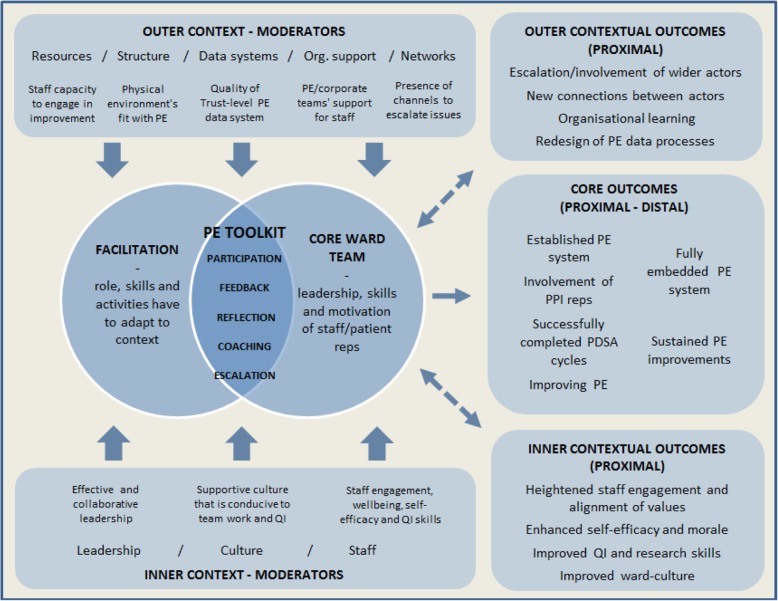Fig. 6.
A Type 4 Logic Model for the PET Intervention. This type 4 logic models lists PET’s core intervention mechanisms (rather than a precise list of activities and resources) to allow for variation across settings while the model shape has been designed to address the inadequacies of the initial logic model identified above. 1. Roles – Where the initial model could not convey how the roles of facilitators and ward teams differed in each setting, the two circles of the Venn are designed to convey that roles and relationships must be adapted to fit the willingness and capacity of each ward team to engage. 2. Interaction between the facilitation and moderators – Although the PARIHS model assigns a single Venn circle to context, we have distinguished between contextual moderators that exert an influence from the outer context and the inner context. This is to show the full spectrum of factors that facilitators of PET must respond to for the intervention to succeed, either utilising positive moderators or overcoming negative moderators. 3. Irregular patterns of proximal outcomes – Core proximal and distal outcomes are listed to the centre-right, emerging if the intervention is successfully adapted to context. Context-dependent proximal outcomes linked to efforts to improve the receptiveness of ward settings to the intervention are situated at the top-right and bottom-right, in accordance with whether they target the outer or inner context respectively. The dotted arrows linking the Venn to these contextual, proximal outcomes convey the peripheral nature of these outcomes. 4. Proximal outcomes influencing later success – Finally, the double-headed arrows convey how the emergence of contextual, proximal outcomes can strengthen the work of the project

